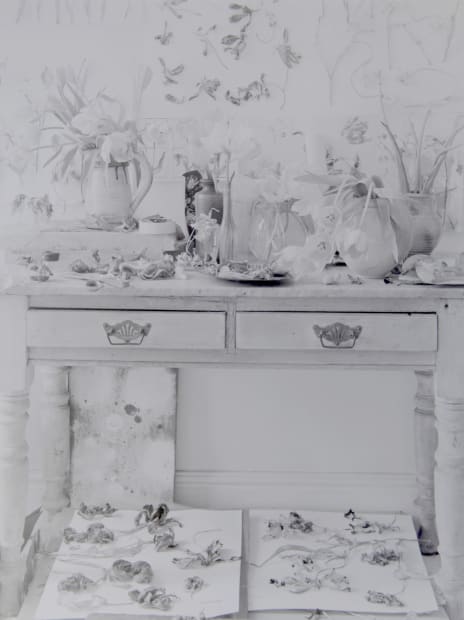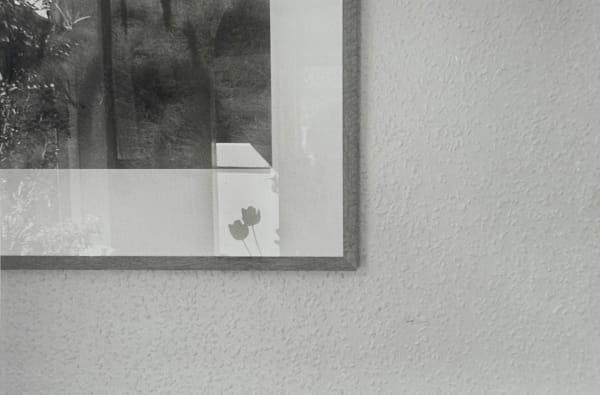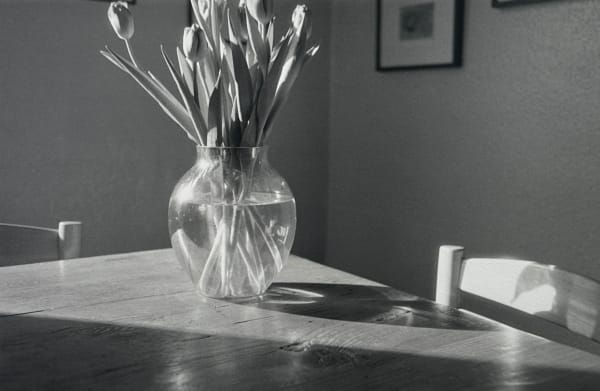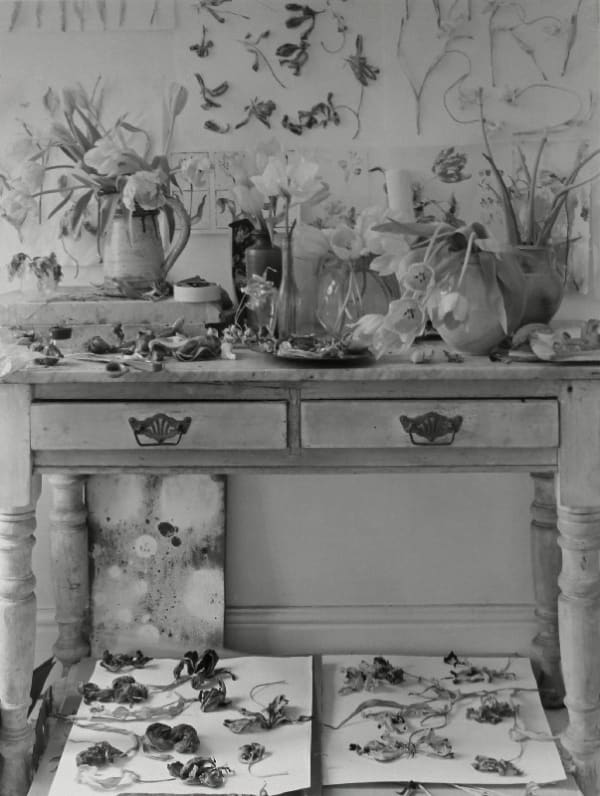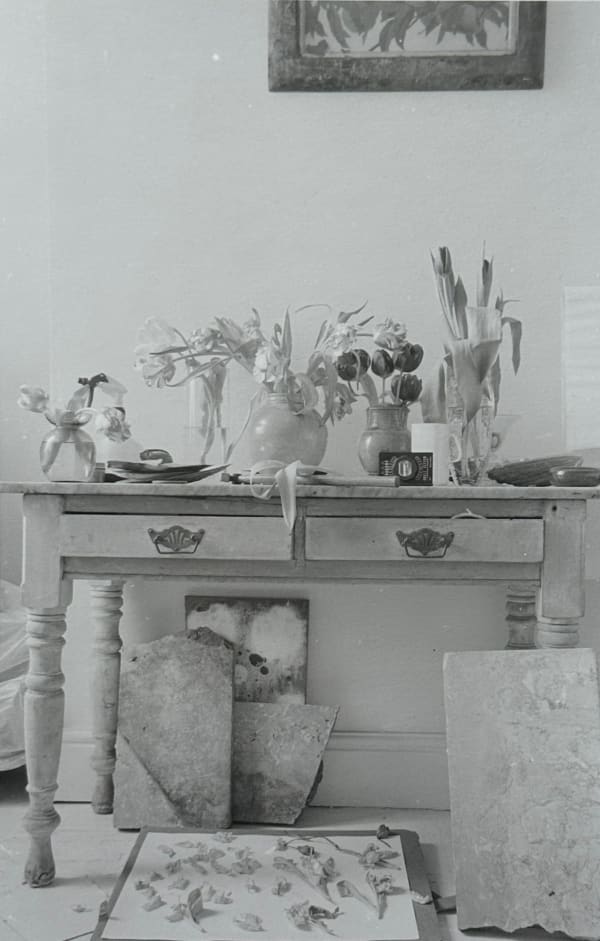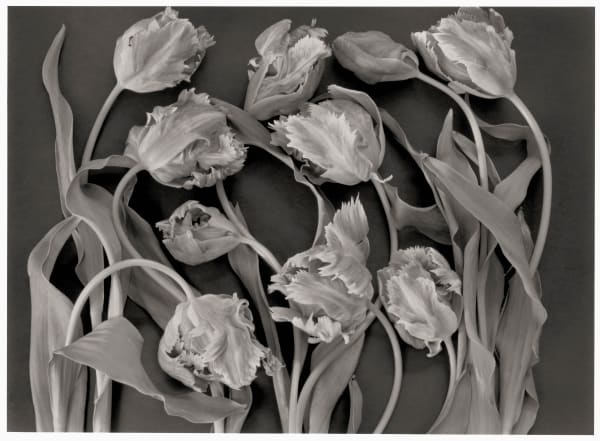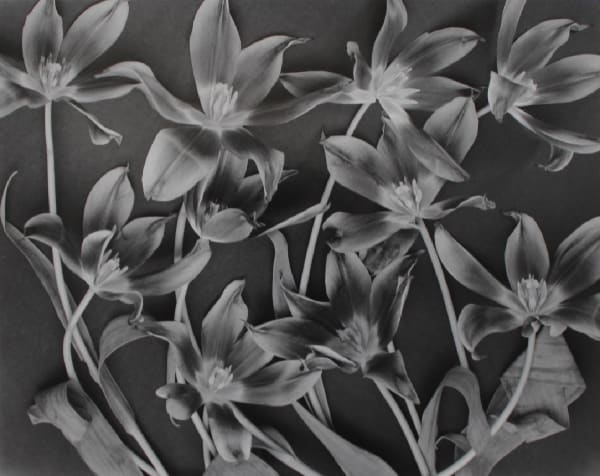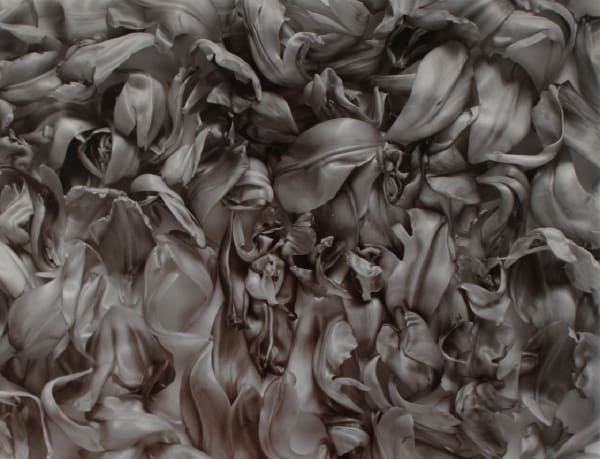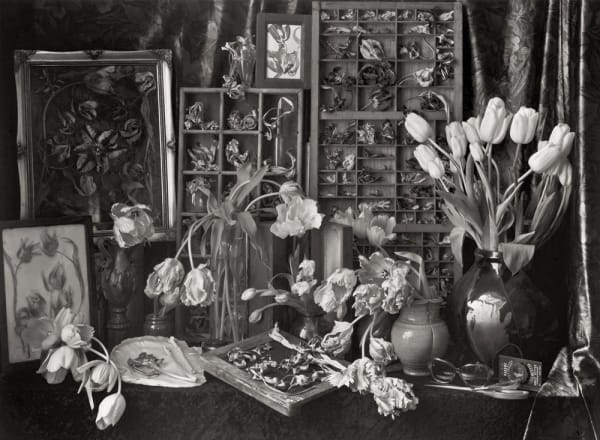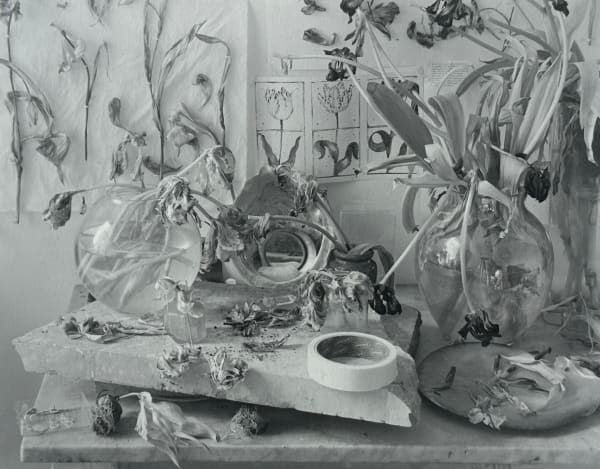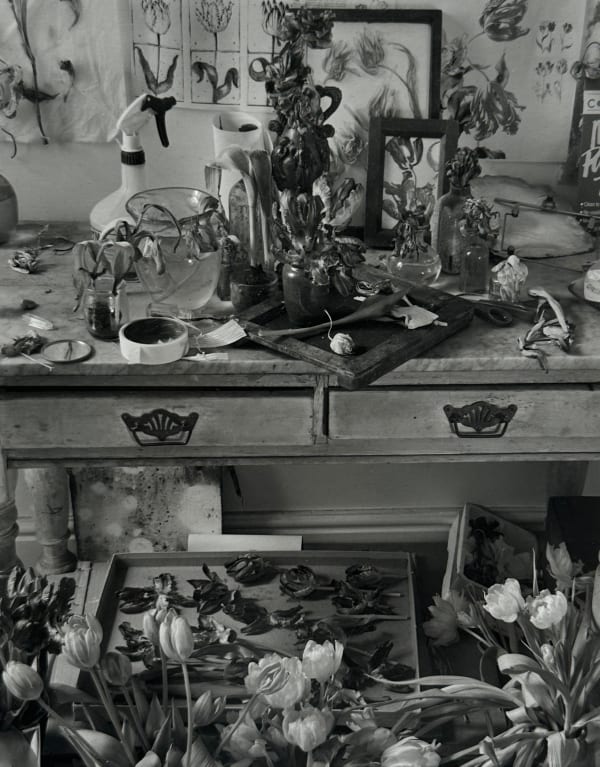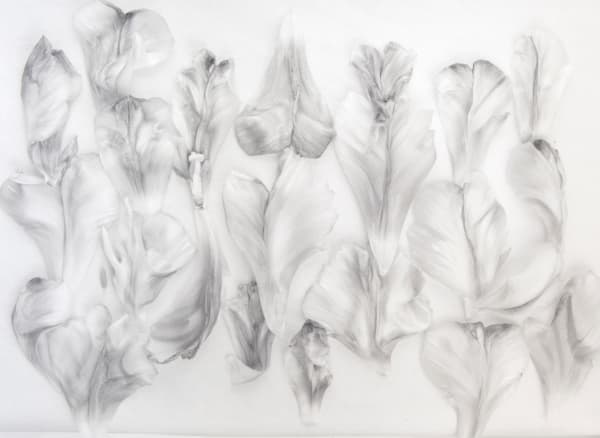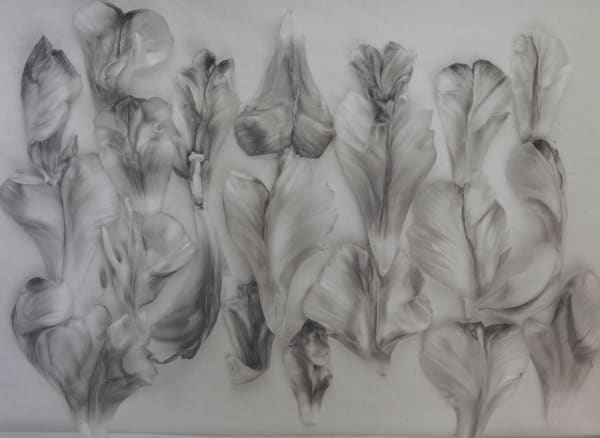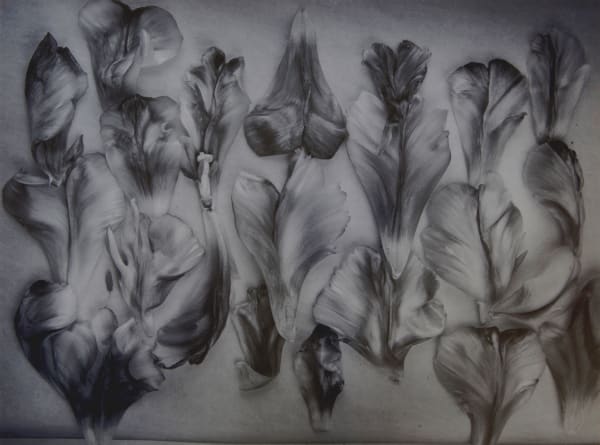Tulipa – Some Thoughts On Picture Making
John Blakemore
Imagine a space, a domestic space, a familiar space. The elements which structure that space. A table, chairs, prints on the wall , a vase of tulips and the defining light. Light that illuminates, describes, transforms.
The quality of familiarity has always been significant to me, a room, a garden , a landscape, known and understood. I have always distrusted the penchant of photographers to seek out the strange , the unfamiliar, the picturesque.
To visit a place, a motif briefly is to see, to photograph, the obvious. Those elements we expect to see.
We inevitably approach a subject with pre conceptions of the possible. To revisit, again and again, is ,strange as it may seem, to see anew.
So the domestic space, known, a constant presence, there to be looked at, to be constantly observed; the continuous shifts of light; morning light, evening light, the changes of the seasons, of the weather.
Tulips, a fascination, text and pretext for an activity of picture making. Observation , the play of the medium, this surely is where the act of picture making begins.
The simplicity of the early tulip images is about discovery, an intensity of looking; Shadows reflected in the glass of a vase, shadows which appear to be upside down to where we ‘know’
that the flowers are situated.
An awareness of things not previously seen. To observe, to photograph, to collect.
But subject is not only the flowers, but all that the frame of the camera includes; the relationship between the curve of a stem and the curve of a chair, the geometry of the space produced by the meeting points of objects, the way wall and table edge meet. The strange geometries that the amputations of the frame may reveal
Observation, an intensity of looking, awareness of the totality of the space.
In the prolonged exploration of a space I like to think of possible oppositions, ‘simplicity’, ‘complexity’ for example. What are the most simple images I can make and still consider them part of the tulip work?
How can I make complex images where response to the space might be problematized? Interestingly both modes of seeing were most fully realized through the use of reflections.
But consider also the play of the medium, of the process, of the controls it affords.
An exploration of the limits of tonality has been central to my practice since the mid seventies..
To decide, at the moment of exposure, the tonalities I want in the final print and to have the control of process necessary to realize them. Black and white, and the myriad nuances of grey, a multiplicity of connotation to be explored and utilized.
-----------------
Tulipomania' that period in the 17th century when the tulip became an object of commerce, so highly valued that fortunes were made and lost trading tulip bulbs.
In making the final images for inclusion in ‘The Stilled Gaze’, the monograph of my tulip images I thought that for the past few years I had myself been a sort of ‘tulipomaniac’. I decided to make an image of the fictitious and imagined study of a 17thcentury tulip fanatic.
‘Tulpomania’ 1 was my first attempt, I had been making the hangings of dried tulips which adorned the walls and collected various images of tulip paintings. Though I liked the image I felt it lacked gravitas and was tonally much lighter than the images that it would share exhibition wallspace with.
I started again, lining the alcove with dark materials and using one of my images framed. The resultant image had the mood I was seeking, became ‘Tulipomania 2’ the image I used for the cover of my tulip monograph.
----------

 John Blakemore, Tulipa, 1986
John Blakemore, Tulipa, 1986 John Blakemore, Tulips from "Kitchen Series", 1988
John Blakemore, Tulips from "Kitchen Series", 1988 John Blakemore, The Studio Table No. 6, 1994
John Blakemore, The Studio Table No. 6, 1994 John Blakemore, The Studio Table, No. 1, 1994
John Blakemore, The Studio Table, No. 1, 1994 John Blakemore, Tulipa - Celebrations, 1994
John Blakemore, Tulipa - Celebrations, 1994 John Blakemore, Tulipa - Celebrations (3), 1994
John Blakemore, Tulipa - Celebrations (3), 1994 John Blakemore, Tulipa - Garden of Earthly Delights (2), 1994
John Blakemore, Tulipa - Garden of Earthly Delights (2), 1994 John Blakemore, Tulipomania No. 2, 1994
John Blakemore, Tulipomania No. 2, 1994 John Blakemore, Tulipa (The Studio Table 3), 1994
John Blakemore, Tulipa (The Studio Table 3), 1994 John Blakemore, Tulipa - The Studio Table, 1994
John Blakemore, Tulipa - The Studio Table, 1994 John Blakemore, Tulipa - Celebrations, 1994
John Blakemore, Tulipa - Celebrations, 1994 John Blakemore, Tulipa - Garden of Earthly Delights (2), 1994
John Blakemore, Tulipa - Garden of Earthly Delights (2), 1994 John Blakemore, Tulipa - Garden of Earthly Delights No.1 - Version 1, 2004
John Blakemore, Tulipa - Garden of Earthly Delights No.1 - Version 1, 2004 John Blakemore, Tulipa - Garden of Earthly Delights No.1 - Version 2, 2004
John Blakemore, Tulipa - Garden of Earthly Delights No.1 - Version 2, 2004 John Blakemore, Tulipa - Garden of Earthly Delights No.1 - Version 3, 2004
John Blakemore, Tulipa - Garden of Earthly Delights No.1 - Version 3, 2004